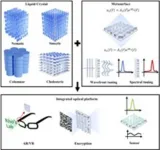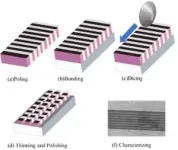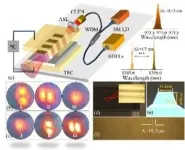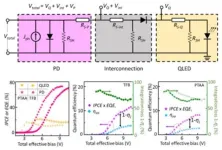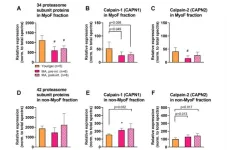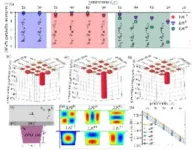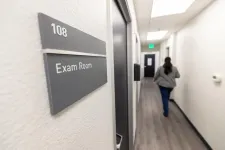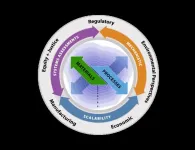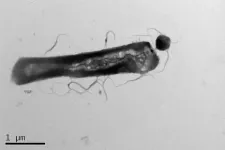A new publication from Opto-Electronic Advances; DOI 10.29026/oea.2024.230216 , discusses liquid crystal-integrated metasurfaces for an active photonic platform.
In the field of optical science, the exploration of metasurfaces has garnered significant attention over the last few decades. Metasurfaces represent a sophisticated evolution of traditional optical components, comprising nanostructures meticulously arranged to enable precise control over light manipulation. These nanostructures function as building blocks, allowing for the creation of lenses with unique properties, such as extreme thinness, lightweight design, and miniaturization. The intrinsic appeal of metasurfaces lies in their potential to supersede existing optical systems while introducing novel functionalities unattainable through conventional means. Their capabilities extend beyond mere replacement, offering features like expanded field-of-view and enhanced resolution. This versatility has ignited interest in applications spanning diverse domains, including displays, sensors, augmented/virtual reality (AR/VR), and light detection and ranging (LiDAR).
However, conventional metasurfaces face a fundamental limitation – their static nature impedes dynamic responses, akin to stationary structures devoid of adaptability. Addressing this limitation has led to the conceptualization of an "active photonic platform," aiming to impart metasurfaces with dynamic responsiveness. The realization of an active photonic platform involves strategic collaboration with materials capable of dynamic property alterations. This paper delves into a crucial collaborator in this pursuit – liquid crystals. Liquid crystals possess advantages such as the rapid modulation of optical properties within milliseconds across a broad spectrum, including visible, IR, and THz bands. Their notable transparency in the visible range makes them exceptionally well-suited for practical applications. Moreover, as evident from their use in liquid crystal displays, the mass production capability and industrial feasibility of liquid crystals have already been validated, positioning them as the most promising candidate for an active metasurface.
The authors of this article investigated the synergistic integration of liquid crystals with metasurfaces. The exploration commenced with a meticulous analysis of the advantages and disadvantages of liquid crystals, including a comparative examination of different types such as nematic, smectic, columnar, and cholesteric liquid crystals. Subsequently, the study delved into recent advancements, elucidating how liquid crystals, when integrated with metasurfaces, contribute to functionalities such as hologram, lens, beam steering, transmissive/reflective modulation, and absorber. The exploration extended to potential applications in cutting-edge technologies like AR/VR, encryption, and sensors. Furthermore, this article delves into the challenges and future directions of integrating liquid crystals with metasurfaces, providing detailed examples and explanations. Despite significant efforts to create practical photonic platforms, limitations persist, necessitating joint research on liquid crystals and metasurfaces. This review serves as a guide, offering insights into their collaborative potential and aiding in the identification of research trends for tunable metasurfaces.
This paper serves as a comprehensive exploration of the collaborative integration of liquid crystals with metasurfaces, shedding light on the scientific intricacies that underpin this advanced optical technology. Beyond the analysis of advantages, disadvantages, and recent studies, it is crucial to consider the methodological approaches and emerging trends to facilitate a holistic comprehension of the subject matter. The integration of liquid crystals with metasurfaces presents a promising avenue for the development of dynamic optical systems, paving the way for transformative applications in various technological domains.
Keywords: tunable metasurface / liquid crystal / active metasurface / electrically tunable optical system
# # # # # #
Within Rho's research group, the Nano-Scale Photonics and Integrated Production Research Laboratory, we are extensively researching the development of innovative materials using 'metamaterials.' These materials exhibit properties not found in nature, achieved by controlling the structure, size, and periodicity of artificial constructs. Our active investigations include phenomena such as phase and luminescence in nanostructures. Additionally, we are committed to overcoming diffraction limits by developing ultra-high-resolution imaging and nanofabrication methods, utilizing both 3D metamaterials and 2D metasurfaces. Furthermore, we are involved in the development of micron-level thin metalenses and holographic components. Our focus also extends to optical components capable of active responses to external stimuli, including polarization, humidity, heat, and electrical signals. Research is underway on the use of metamaterials in underwater environments, mechanical metamaterials with absorption and insulation effects, and seismic wave optical crystals utilizing bandgaps. This extends the operation of metamaterials beyond electromagnetic waves to acoustic waves, elastic waves, seismic waves, and more. To maximize the efficiency of designing these nano-optical structures, the development of artificial intelligence networks such as deep learning and machine learning is also underway. Our group currently holds more than 40 original patented technologies applied for and registered domestically and internationally. Through collaborative research with leading domestic and international companies in the field of optical components, our group is exploring ways to practically utilize the field of meta-optics.
Prof. Rho is currently a Mu-Eun-Jae Endowed Chair Professor and Young Distinguished Professor at Pohang University of Science and Technology (POSTECH), Korea, with a double appointment in the Department of Chemical Engineering and the Department of Mechanical Engineering. He received his Ph.D. at the University of California, Berkeley (2013), M.S. at the University of Illinois, Urbana-Champaign (2008) and B.S. at Seoul National University, Korea (2007) all in Mechanical Engineering. He also has a degree majoring in English, French, and Chinese at Myungduk Foreign Language High School, Korea. Prior to joining POSTECH, he conducted postdoctoral research in the Materials Sciences Division & Molecular Foundry at Lawrence Berkeley National Laboratory, and also worked as a principal investigator (Ugo Fano Fellow - one of the highest honored named fellowships supported by the US Department of Energy) in the Nanoscience and Technology Division & the Center for Nanoscale Materials at Argonne National Laboratory.
# # # # # #
Opto-Electronic Advances (OEA) is a rapidly growing high-impact, open access, peer reviewed monthly SCI journal with an impact factor of 14.1 (Journal Citation Reports for IF2022). Since its launch in March 2018, OEA has been indexed in SCI, EI, DOAJ, Scopus, CA and ICI databases over the time, and expanded its Editorial Board to 30 members from 17 countries.
The journal is published by The Institute of Optics and Electronics, Chinese Academy of Sciences, aiming at providing a platform for researchers, academicians, professionals, practitioners, and students to impart and share knowledge in the form of high quality empirical and theoretical research papers covering the topics of optics, photonics and optoelectronics.
# # # # # #
More information: http://www.oejournal.org/oea
Editorial Board: http://www.oejournal.org/oea/editorialboard/list
All issues available in the online archive (http://www.oejournal.org/oea/archive).
Submissions to OEA may be made using ScholarOne (https://mc03.manuscriptcentral.com/oea).
ISSN: 2096-4579
CN: 51-1781/TN
Contact Us: oea@ioe.ac.cn
Twitter: @OptoElectronAdv (https://twitter.com/OptoElectronAdv?lang=en)
WeChat: OE_Journal
# # # # # #
Kang DH, Heo HS, Yang YH et al. Liquid crystal-integrated metasurfaces for an active photonic platform. Opto-Electron Adv 7, 230216 (2024). doi: 10.29026/oea.2024.230216
END
